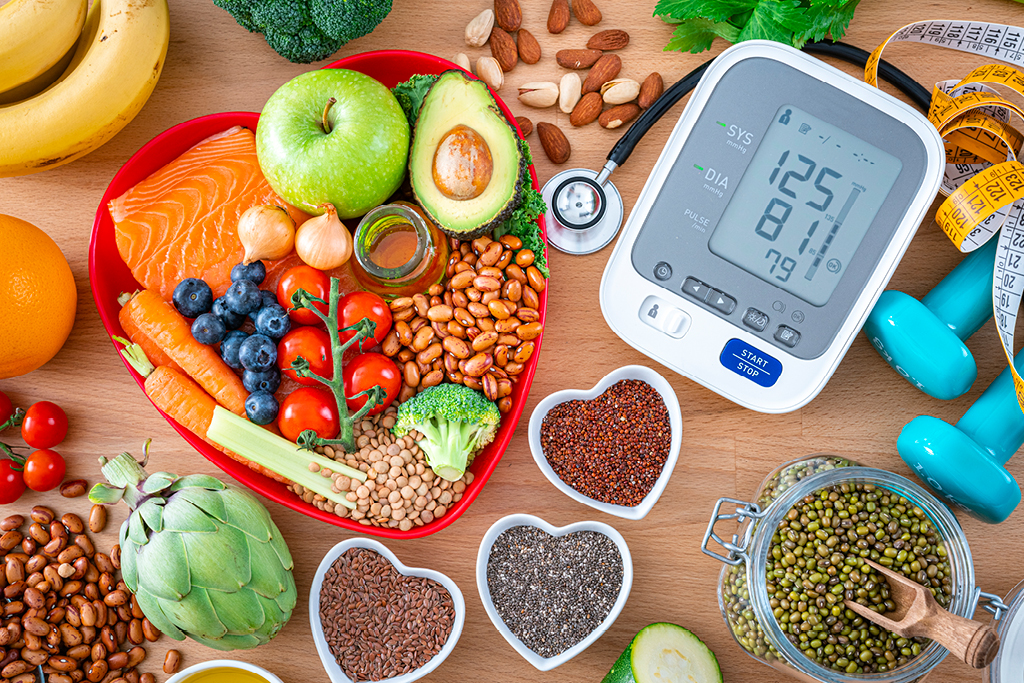Did you know February is American Heart Month? First officially recognized in 1964 after a proclamation issued by President Lyndon B. Johnson, the month-long observation celebrates its 60th year in 2024. And it offers the perfect time to learn a bit about cardiovascular disease, as well as to review the risk factors and discover how to improve your heart health.
It’s critical to always have cardiovascular health in mind. And American Heart Month makes it easy to remember to do so.
What is American Heart Month?
American Heart Month is a month promoting awareness about the health of one of your most critical organs: the heart. Emphasis is often put on reducing the risk of hypertension, or high blood pressure, which is a leading cause of heart disease.
What is cardiovascular disease?
Cardiovascular diseases cover a range of issues. Many relate to atherosclerosis, a thickening or hardening of the arteries that occurs when plaque builds up on the artery walls. This narrows the arteries, degrading the blood’s ability to flow through them. As a result, this increases the risk of a blood clot blocking blood flow and causing a heart attack or stroke.
What are the risk factors?
Risk factors determine the chances a person might contract heart disease. These chances hinge on several factors — some of which are changeable. Risk factors for heart disease vary by person and can include:
- Being age 55 or older for women, and 45 or older for men
- Being overweight
- Being sedentary
- Eating an unhealthy diet high in:
- Fat
- Sodium
- Sugar
- Having a family history of early heart disease, with your risk increasing if:
- Your brother or father had a diagnosis by age 55
- Your mother or sister had a diagnosis by age 65
- Having diabetes, gestational diabetes or prediabetes
- Having a history of preeclampsia (a sudden elevation in blood pressure and excess protein in the urine during pregnancy)
- Having high blood pressure
- Having high cholesterol
- Misusing prescription or recreational drugs
- Overusing alcohol
- Smoking
- Vaping
Every risk factor raises the odds of developing heart disease, and these odds further increase with each added risk.
CARDIOVASCULAR DISEASES
Heart disease affects not only the heart but also the blood vessels. It is also the leading cause of death for men and women in the United States. But to reduce your risks, you can take measures to protect your heart and improve your cardiovascular health. Cardiovascular disease often includes symptoms, but not always. It can cause:
- Faulty heart valves
- Irregular heart rhythms
- Narrowing of blood vessels in your heart and other organs
- Heart and blood vessel issues from birth
Examples of heart disease include:
- Aortic disease: Potentially causing issues such as an aneurysm or dilation, this disease affects the aorta, the body’s largest blood vessel that pushes blood around the body.
- Arrhythmia: This condition is characterized by trouble with your heart’s electrical conduction system. It can cause abnormal heart rhythms or heart rates.
- Cerebrovascular disease: Characterized by narrowing or blockages, these are issues with the vessels that deliver blood to the brain.
- Congenital heart disease: This condition causes heart problems from birth.
- Coronary artery disease: The most common type of heart disease, coronary artery disease is characterized by blockages and other heart and blood vessel issues.
- Deep vein thrombosis (DVT): This condition is characterized by blockage in the veins and vessels that carry blood from other parts of your body to your heart.
- Heart failure: Characterized by difficulties with the heart’s pumping and relaxing functions, this condition can cause fluid buildup and shortness of breath.
- Pericardial disease: This condition is characterized by trouble with the lining of your heart, including pericarditis (swelling) and pericardial effusions (excess fluid in the sac-like lining around the heart).
- Peripheral artery disease: Potentially leading to blockages or narrowing of the blood vessels, this condition can cause problems with the blood vessels of the abdomen, arms, and legs.
- Valve disease: This condition is characterized by a tightening or leaking of the heart valves, which permit blood to flow from one chamber of the heart to another chamber or blood vessel.
How to prevent cardiovascular diseases
Physical activity is key to improving your heart health. It can help prevent a heart attack or stroke. An active lifestyle can help you:
- Guard against artery damage from high blood pressure, high blood sugar, and high cholesterol
- Maintain a healthy weight
- Strengthen your heart muscle
For most people, achieving and maintaining heart health includes the following main factors:
- Making healthy choices
- Eating healthy foods
- Increasing physical activity
- Understanding risk, some of which can’t be changed, such as:
- Age
- Family history of early heart disease
- Gender
If you’re at risk, you likely need to make changes, which can be done gradually over time. But deciding to make healthy changes is essential.
EXERCISES TO IMPROVE CARDIOVASCULAR HEALTH
To keep your heart healthy, it helps to regularly perform a variety of exercises geared toward fitness. The three most important exercise-related factors for heart health include:
- AEROBIC EXERCISE: This type of exercise enhances circulation, which can reduce blood pressure and heart rate. Aerobic exercise helps your heart pump more efficiently. This is known as cardiac output. It can also decrease your risk of type 2 diabetes and help you control blood glucose if you already have the condition.
- Recommended duration: 30 minutes a day, five days a week
- Examples: Heart-pumping, moderate-to-heavy activity such as:
- Brisk walking
- Cycling
- Jumping rope
- Playing tennis
- Running
- Swimming
- RESISTANCE TRAINING: Also known as strength training, this type of exercise impacts body composition. For those who carry excess fat, including a bulging belly, it can help lower fat and build lean muscle mass. Combining aerobic exercise and resistance training can boost healthy cholesterol levels (HDL). It can also reduce harmful cholesterol levels (LDL).
- Recommended duration: At least two days per week with rest in between
- Examples:
- Body resistance training such as:
- Chin-ups
- Push-ups
- Squats
- Working out with free weights, including:
- Barbells or dumbbells
- Hand weights
- Working out with resistance bands
- Working out with weight machines
- Body resistance training such as:
- BALANCE, FLEXIBILITY, AND STRETCHING: These types of exercises benefit musculoskeletal health. They can also help ensure that you stay flexible. Doing so can prevent joint pain, and it can also prevent cramping and other muscular problems. Plus, flexibility is vital to most aerobic exercises and resistance training. Balance and flexibility help with your stability and aid in the prevention of falls.
- Recommended duration: Daily, before and after other exercises
- Examples:
- Basic stretches (Find them on DVDs and YouTube, or learn about them from a care provider.)
- Tai Chi
- Yoga
Wilmington Health can help assess your heart health
The cardiology team at Wilmington Health offers TRUE Care. Wilmington Health can make efficient and accurate diagnoses of heart and vascular conditions. We provide preventive care focused on slowing the process of atherosclerosis with the latest technology and effective treatment.
Your care team can help you with:
- Behavioral interventions
- Diagnostic and therapeutic procedures
- Lifestyle modification
- Medications
We seek to improve health status, enhance the quality of life, and increase life expectancy. Contact the Wilmington Health cardiology team today.

